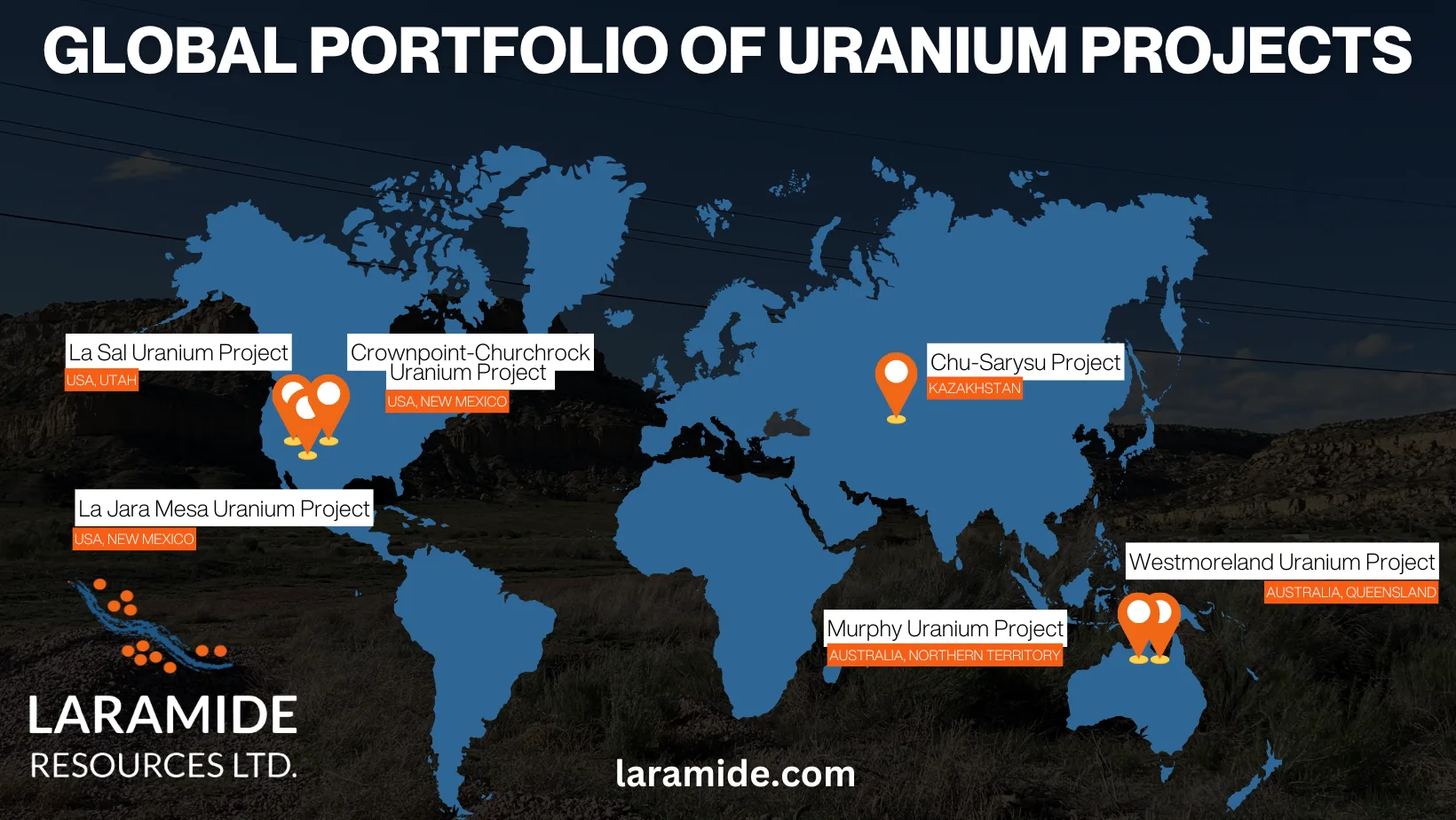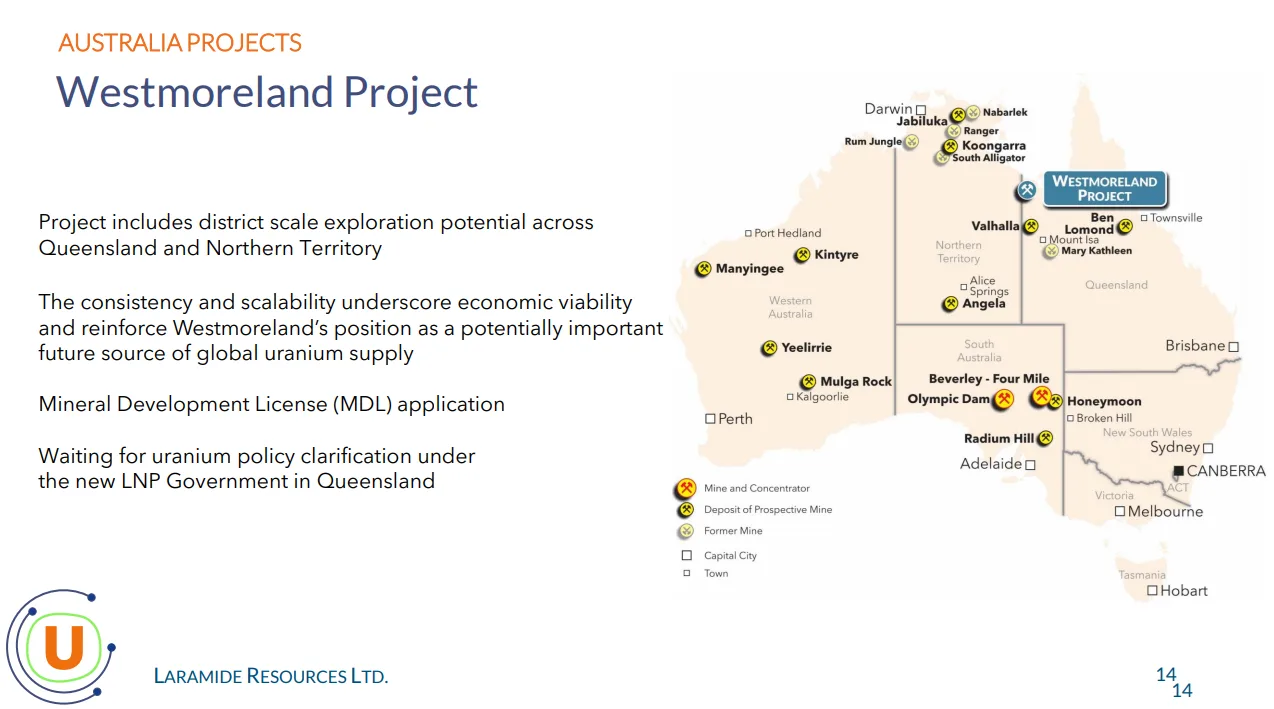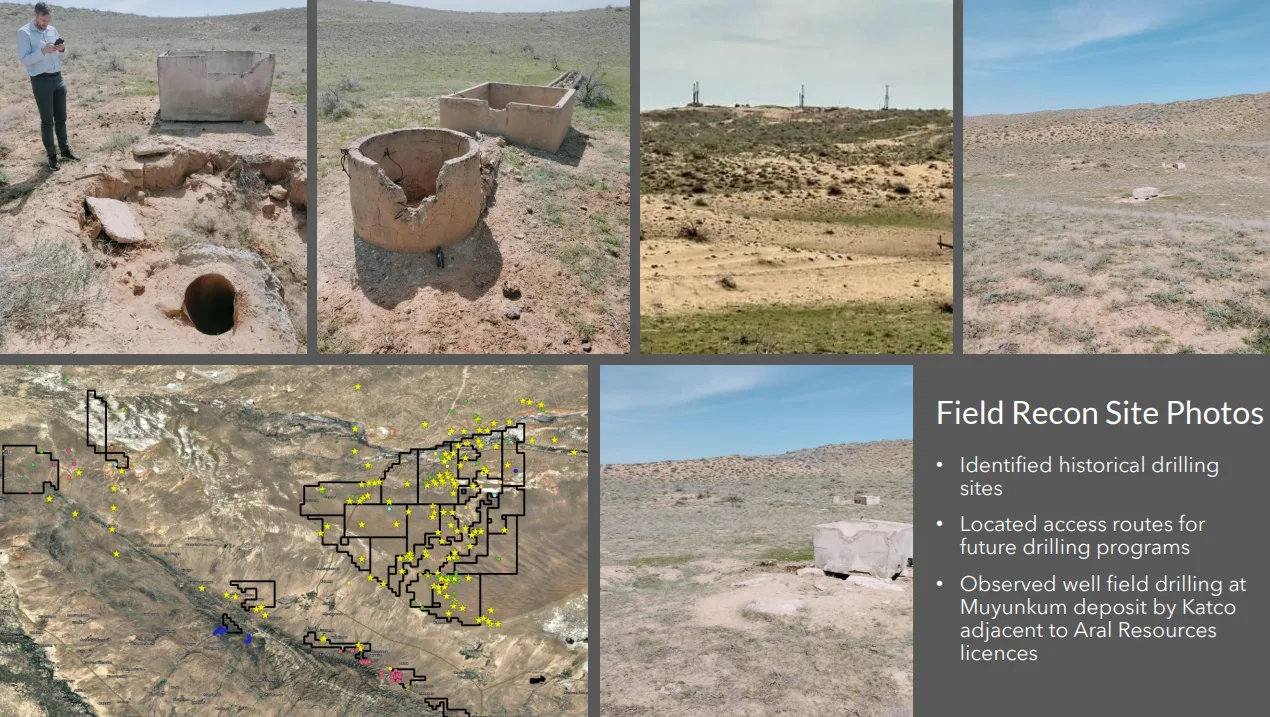
We had a pleasure of talking to one of the most experienced CEO in uranium space, Mr. Marc Henderson, CEO of Laramide Resources, a uranium development and exploration company. We discussed the global uranium market, Laramide’s flagship Westmoreland project in Queensland, updates on U.S. and Kazakhstan assets, and the company’s outlook for the near future, offering insights into Laramide’s strategic positioning in a rapidly evolving uranium market.
The Uranium Market: A Robust Demand Outlook
Henderson began by sharing his perspective on the uranium market, referencing the World Nuclear Association (WNA) fuel report presented at recent symposium. For the first time in his recollection, the WNA’s demand projections were exceptionally bullish, even in their low-case scenario, forecasting a compounded annual growth rate of nearly 5% for the next 15 years. This signals a robust future for nuclear energy, driven by global decarbonization efforts and increasing energy demands.
However, Henderson highlighted a critical challenge: the supply side remains largely unchanged. The same projects and companies are expected to meet this surging demand, which he believes will require higher uranium prices to incentivize development. “All these existing projects are going to have to get built, probably requiring higher prices,” Henderson noted, emphasizing the need for aggressive exploration to secure supply for the next 15 years. With nuclear energy gaining traction globally, the pressure is on to unlock new resources, particularly in regions like Australia.
Westmoreland Project: A Game-Changer in Queensland
 A significant portion of our discussion focused on Laramide’s Westmoreland uranium project in Queensland, Australia, which has been constrained by a longstanding state policy restricting uranium mining. Henderson expressed optimism about a potential policy shift following the election of the Liberal National Party (LNP) government in late 2024. Historically, the LNP has reversed similar restrictive policies shortly after taking office, and Henderson believes the current political climate is favourable for change.
A significant portion of our discussion focused on Laramide’s Westmoreland uranium project in Queensland, Australia, which has been constrained by a longstanding state policy restricting uranium mining. Henderson expressed optimism about a potential policy shift following the election of the Liberal National Party (LNP) government in late 2024. Historically, the LNP has reversed similar restrictive policies shortly after taking office, and Henderson believes the current political climate is favourable for change.
“It’s not really a ban; it’s a policy change,” Henderson clarified, noting that the decision lies primarily with the Queensland premier. He pointed to broader macro trends supporting this shift, including Australia’s role in the AUKUS nuclear submarine agreement and the global need for secure uranium supply chains. “It’s hard to see a scenario where Australia gets nuclear submarines but doesn’t get rid of legacy impediments to uranium mining,” he said. With only a few operational uranium mines in Australia, Westmoreland’s scale and near-term production potential position it as a critical asset.
This geopolitical momentum is poised to accelerate with the upcoming bilateral meeting between U.S. President Donald Trump and Australian Prime Minister Anthony Albanese, scheduled for October 20, 2025, in Washington, D.C. The summit, confirmed amid recent diplomatic overtures—including a personal letter from Trump to Albanese lauding Australia's alliance contributions—signals a renewed focus on trans-Pacific security and energy interdependence. For the uranium sector, the timing could not be more opportune. The Trump administration, with its vocal advocacy for nuclear expansion to counter energy vulnerabilities and support AI-driven data center demands, views Australia's vast reserves—holding 28% of global identified uranium resources, or approximately 1.7 million tonnes—as indispensable for diversifying away from Russian and Kazakh dominance. Australia already supplies a meaningful portion of U.S. uranium imports, alongside Canada and Kazakhstan, but escalating reactor buildouts and AUKUS commitments underscore an acute supply gap projected to persist into the 2030s.
Westmoreland, with its recently upgraded indicated resources exceeding 65 million pounds of U3O8 following a 2025 infill drilling campaign, emerges as a linchpin in this narrative. As one of the world's premier undeveloped uranium deposits not controlled by a major producer, it could deliver 4–5 million pounds annually upon commissioning, directly alleviating U.S. exposure to supply disruptions in geopolitically volatile regions. Henderson underscored how such assets align with Washington's Fast-41 permitting accelerations for domestic projects, suggesting that bilateral dialogues like the Trump-Albanese summit could catalyze federal incentives for Australian exports, including streamlined export licenses and joint venture frameworks. This convergence not only bolsters Westmoreland's path to production but also reframes Queensland's policy inertia as a temporary bottleneck in a broader U.S.-led nuclear renaissance.
A 2025 resource update for Westmoreland increased indicated resources by approximately 20% to over 65 million pounds of U3O8. Henderson attributed this upgrade to infill drilling and the inclusion of a new zone, which enhances the project’s economic viability. The updated resource supports potential production of 4 to 5 million pounds annually, compared to the previous estimate of 3.5 to 4 million pounds. Laramide plans to refresh its economic studies soon to reflect these improvements, with Henderson emphasizing the project’s scalability and economic attractiveness at current uranium prices, particularly with peers like NexGen using $90 per pound in their financial models.
We also touched on the discovery of gold mineralization alongside uranium at Westmoreland, raising the possibility of polymetallic potential. While Henderson downplayed the immediate impact of gold credits on the initial production plan, he noted that Laramide’s broader exploration package in Queensland and the Northern Territory holds significant potential for copper and rare earth elements. These critical minerals could further drive policy changes by highlighting the need to address radioactivity-related regulations, reinforcing the case for uranium mining.
Regarding the timeline for lifting Queensland’s uranium mining restrictions, Henderson indicated that the process could be swift. “They could have done it on Friday afternoon with a press release,” he said, suggesting that a simple amendment to mineral lease applications could unlock Westmoreland’s potential. Such a policy change would likely trigger a significant revaluation of Laramide’s stock, with Henderson citing analyst estimates that value Westmoreland at 0.2 NAV currently, potentially rising to 0.4–0.6 NAV once the project is greenlit—especially if U.S. diplomatic pressure via channels like the impending summit amplifies the strategic imperative.
U.S. Assets: Streamlined Permitting and Strategic Support
In the United States, Laramide’s Crownpoint-Churchrock and La Jara Mesa projects have been designated as Fast-41 covered projects, a federal initiative aimed at streamlining permitting for critical infrastructure. Henderson emphasized the significance of this designation, noting that it reflects strong support from the current U.S. administration. “It’s pretty clear that the administration has your back,” he said, highlighting a transparent and aggressive permitting schedule that targets completion by Q2 2027.
This streamlined process prevents agencies from slow-walking approvals, ensuring steady progress. Henderson drew parallels with Lithium Americas, a company that saw its stock surge after government backing for its lithium project, suggesting that similar support for uranium could address critical supply shortages. At Churchrock, Laramide is focused on permitting, with detailed drilling and team-building to follow as the project nears its “shovel-ready” date in 2027. The project’s ISR nature and grades 2–3 times higher than those in Namibia enhance its economic viability, particularly at $90 per pound.
The Murphy project in the Northern Territory, while earlier stage, also shows promise. Radiometric surveys and historical data have identified multiple targets, including a significant tin anomaly. However, Henderson noted that exploration in the Northern Territory is slower due to regulatory approvals, and Laramide is prioritizing Westmoreland’s development over immediate resource expansion at Murphy.
Kazakhstan: A New Frontier for Exploration
 Laramide’s entry into Kazakhstan, announced at WNA 2024, marks a bold move into a region that hosts over 70% of the country’s uranium resources. The company has secured access to significant ground in the Chu-Sarysu Basin, a prolific uranium-producing area. Henderson described the exploration potential as “fantastic” for in-situ recovery (ISR) roll-front deposits, noting that much of Kazakhstan’s existing resource base is a legacy of Soviet-era exploration in the 1980s.
Laramide’s entry into Kazakhstan, announced at WNA 2024, marks a bold move into a region that hosts over 70% of the country’s uranium resources. The company has secured access to significant ground in the Chu-Sarysu Basin, a prolific uranium-producing area. Henderson described the exploration potential as “fantastic” for in-situ recovery (ISR) roll-front deposits, noting that much of Kazakhstan’s existing resource base is a legacy of Soviet-era exploration in the 1980s.
Over the past year, Laramide has conducted generative work, analyzing historical data to identify walk-up drill targets. A 15,000-meter drilling program planned for Q4 2025 will target seven discrete areas, with potential extensions of known roll-fronts. Henderson highlighted the cost-effectiveness of drilling in Kazakhstan compared to the U.S. and Australia, where exploration costs are significantly higher. For example, Laramide spent $4 million to drill 10,000 meters and add resources at Westmoreland, while Kazakhstan’s drilling costs are even lower, offering more data points for the investment.
Henderson expressed optimism about the program’s potential to delineate new ISR resources, noting that Kazakhstan’s current production may not sustain global demand beyond 2045. “A reactor turning on today cannot rely on Kazakhstan to get to the end of its useful life,” he said, underscoring the need for new discoveries to replace depleting reserves.
Cost Comparisons and Operational Efficiency
When asked about drilling costs across jurisdictions, Henderson provided a clear hierarchy: the U.S. is the most expensive, followed by Canada, with Australia and Kazakhstan offering more cost-effective exploration. In Kazakhstan, the low cost per meter allows Laramide to gather extensive data, enhancing the efficiency of its exploration program. This cost advantage, combined with the region’s geological potential, positions Kazakhstan as a high-reward opportunity for Laramide.
Upcoming Milestones and Investor Expectations
Looking ahead to the next 4–6 months, Henderson identified several key milestones. The most significant would be a policy change in Queensland, which he described as a “significant revaluation event” not currently priced into Laramide’s stock. Progress in Kazakhstan, particularly results from the Q4 drilling program, is another focal point, with Henderson expressing intellectual curiosity about the potential findings. In the U.S., steady permitting progress is expected, supported by the Fast-41 framework.
Laramide’s market cap, currently around $200 million, benefits from inclusion in major ETFs like the Sprott Miners ETF, with potential for further upside as the company advances its projects. Henderson also highlighted significant insider ownership and a 20% stake held by Boss Energy, a strategic investor with a strong interest in Laramide’s assets. This stake introduces potential M&A dynamics, as Boss likely sees Laramide as a key piece in building a larger uranium production company.
Synergies with Boss Energy
Addressing the relationship with Boss Energy, Henderson emphasized a positive and collaborative dynamic. He noted that the uranium sector lacks a clear third or fourth major player behind Kazatomprom and Cameco, creating opportunities for consolidation. Laramide’s assets, particularly Westmoreland, align with this vision, and Boss’s investment reflects their confidence in Laramide’s potential. While Boss has faced challenges with its ISR startup, Henderson believes it is well-positioned to achieve 1–2 million pounds of annual production, complementing Laramide’s portfolio.
Conclusion
Laramide Resources is strategically positioned to capitalize on the global uranium boom, with a diversified portfolio spanning Australia, the U.S., and Kazakhstan. The Westmoreland project, poised for a potential policy breakthrough amid heightening U.S.-Australia energy dialogues, offers significant scale and economic upside. In the U.S., streamlined permitting and government support enhance the viability of Crownpoint-Churchrock and La Jara Mesa, while Kazakhstan represents a high-potential exploration frontier. With a clear focus on advancing its projects and leveraging cost-effective exploration, Laramide is well-placed to deliver value to investors as the uranium market continues to tighten.
You can find the interview with Marc Henderson here:
Disclaimer: This article is not a recommendation to buy any shares, products, or services. Always conduct your due diligence and consult with a financial advisor.Presented company is our client so we may be considered biased!
Sign up to our free monthly newsletter to recieve the latest on our interviews and articles.
By subscribing you agree to receive our newest articles and interviews and agree with our Privacy Policy.
You may unsubscribe at any time.
We use cookies to improve your experience on our site. By using our site, you consent to cookies.
Websites store cookies to enhance functionality and personalise your experience. You can manage your preferences, but blocking some cookies may impact site performance and services.
Essential cookies enable basic functions and are necessary for the proper function of the website.
These cookies are needed for adding comments on this website.
Statistics cookies collect information anonymously. This information helps us understand how visitors use our website.
Google Analytics is a powerful tool that tracks and analyzes website traffic for informed marketing decisions.
Service URL: policies.google.com (opens in a new window)
Marketing cookies are used to follow visitors to websites. The intention is to show ads that are relevant and engaging to the individual user.
You can find more information in our Privacy Policy.